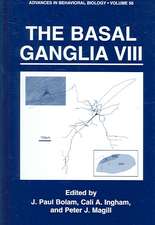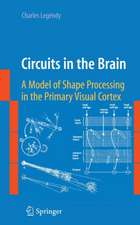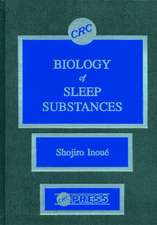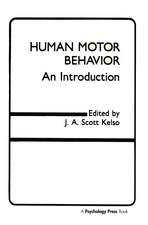Inhibitory Synaptic Plasticity
Editat de Melanie A. Woodin, Arianna Maffeien Limba Engleză Paperback – 9 oct 2014
| Toate formatele și edițiile | Preț | Express |
|---|---|---|
| Paperback (1) | 939.94 lei 6-8 săpt. | |
| Springer – 9 oct 2014 | 939.94 lei 6-8 săpt. | |
| Hardback (1) | 944.99 lei 6-8 săpt. | |
| Springer – noi 2010 | 944.99 lei 6-8 săpt. |
Preț: 939.94 lei
Preț vechi: 1146.26 lei
-18% Nou
Puncte Express: 1410
Preț estimativ în valută:
179.86€ • 192.33$ • 149.96£
179.86€ • 192.33$ • 149.96£
Carte tipărită la comandă
Livrare economică 17 aprilie-01 mai
Preluare comenzi: 021 569.72.76
Specificații
ISBN-13: 9781489981271
ISBN-10: 1489981276
Pagini: 200
Ilustrații: X, 187 p.
Dimensiuni: 155 x 235 x 11 mm
Greutate: 0.29 kg
Ediția:2011
Editura: Springer
Colecția Springer
Locul publicării:New York, NY, United States
ISBN-10: 1489981276
Pagini: 200
Ilustrații: X, 187 p.
Dimensiuni: 155 x 235 x 11 mm
Greutate: 0.29 kg
Ediția:2011
Editura: Springer
Colecția Springer
Locul publicării:New York, NY, United States
Public țintă
ResearchCuprins
PART 1 - REFINEMENTChapter 1: The many faces of inhibitory plasticity: adding flexibility to cortical circuits throughout development L. Wang, Arianna MaffeiChapter 2: Long-term modification at inhibitory synapses in developing visual cortexYukio Komatsu, Yumiko YoshimuraChapter 3: Molecular Mechanism of Long-Term Plasticity at Cerebellar Inhibitory SynapsesShin-ya Kawaguchi, Tomoo HiranoChapter 4: Inhibitory plasticity and auditory functionRobert LiuPART 2 - ADDICTIONChapter 5: VTA GABAergic Plasticity: An Inhibitory Synaptic Model of Drug AddictionFereshteh NugentChapter 6: Midbrain Dopamine Neurons: Implications for the Development of Alcohol-Seeking BehaviorsJohn Theile, Rueben Gonzales, Richard MorrisettPART 3 – PAIN AND INJURYChapter 7: Mechanisms of plasticity of inhibition in chronic pain conditionsCharalampos Labrakakis, Francesco Ferrini, Yves De KoninckChapter 8: Injury induced epileptogenesis: Contribution of active inhibition, disfacilitation and deafferentation to seizure induction in thalamocortical systemIgor TimofeevChapter 9: Cellular Mechanisms of Neuronal Cl- Homeostasis and its Modulation by Neuronal InjuryA.J. Moorhouse and J. Nabekura PART 4 – LEARNING AND MEMORYChapter 10: Activity-Dependent Inhibitory Synaptic Plasticity Mediated by Chloride RegulationTrevor Balena, Brooke A. Acton, Melanie A. WoodinChapter 11: Endocannabinoid mediated long-term depression at inhibitory synapsesChiayu Q. Chiu, Pablo E. CastilloChapter 12: Inhibitory Synaptic Plasticity & NeurotrophinsJean-Luc Gaiarsa, Nicola Kuczewski, Christophe Porcher
Textul de pe ultima copertă
Since its discovery and first publication in 1973, synaptic plasticity in its most popular form – the plasticity of excitatory glutamatergic synapses – has been widely investigated. But to fully understand how brain functions develop and are maintained, there is a need for studying the interaction between the different forms of plasticity. Inhibitory Synaptic Plasticity integrates studies that have examined the induction, expression and functional role of inhibitory synaptic plasticity at different organizational levels (from the neuron to the circuit), through four main parts: Refinement, Addiction, Pain & Injury, and Learning & Memory. This volume brings together a large portion of the current thinking about the plasticity of inhibitory synapses, and will foster new ideas and hypotheses for the study of brain circuits and their function.
Caracteristici
Summarizes and integrates studies that examine the induction, expression and functional role of inhibitory synaptic plasticity at different organizational levels (from the neuron to the circuit)
Material clearly divided by theme into four parts that highlight the major functions of inhibitory synaptic plasticity: Refinement, Addition, Pain & Injury, and Learning & Memory
Brings together a large portion of the current thinking about the plasticity of inhibitory synapses
Material clearly divided by theme into four parts that highlight the major functions of inhibitory synaptic plasticity: Refinement, Addition, Pain & Injury, and Learning & Memory
Brings together a large portion of the current thinking about the plasticity of inhibitory synapses





















